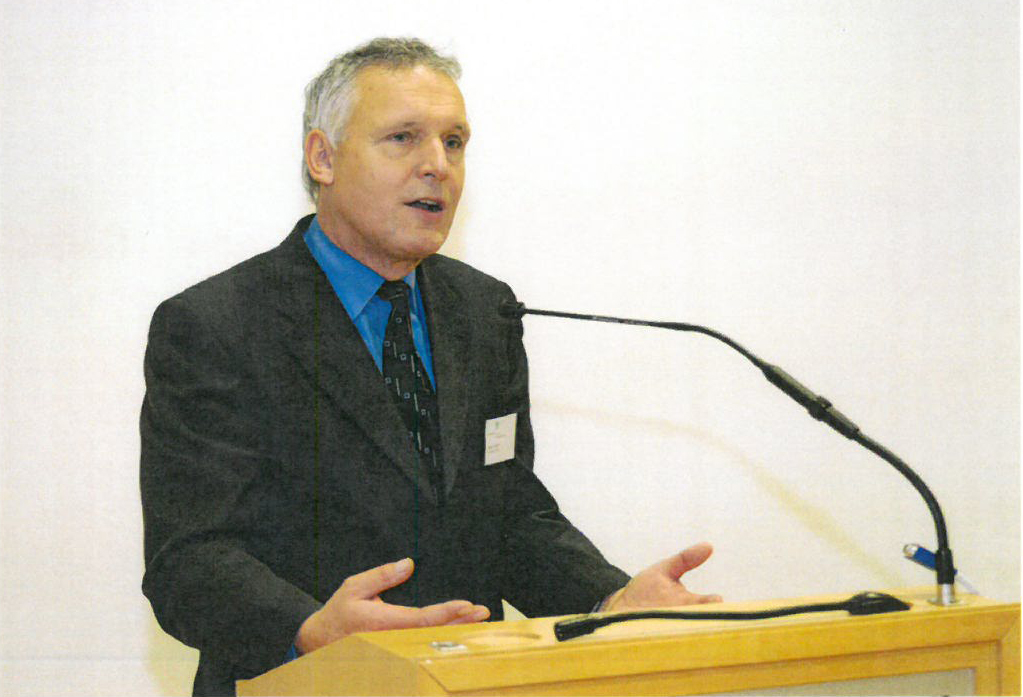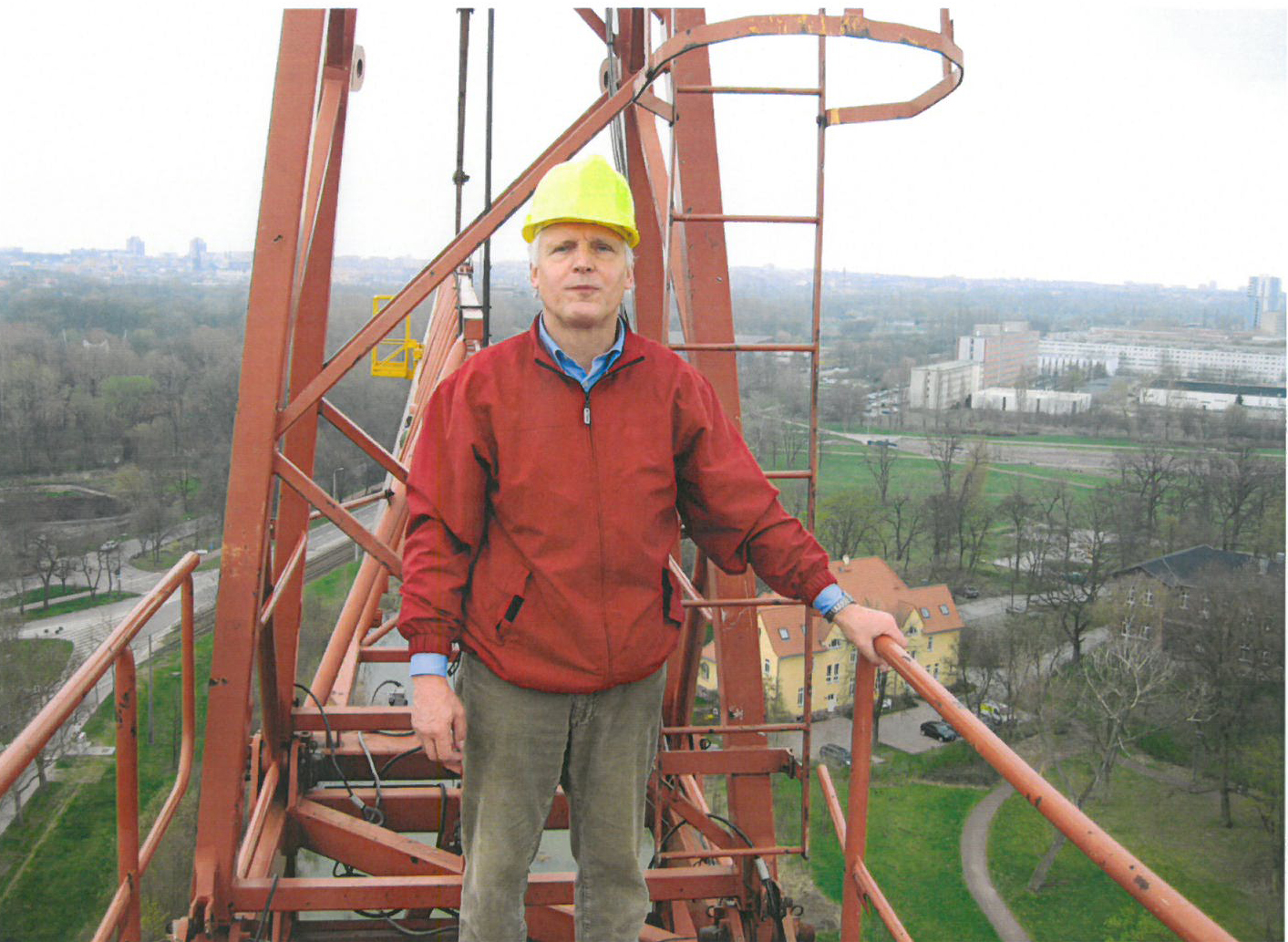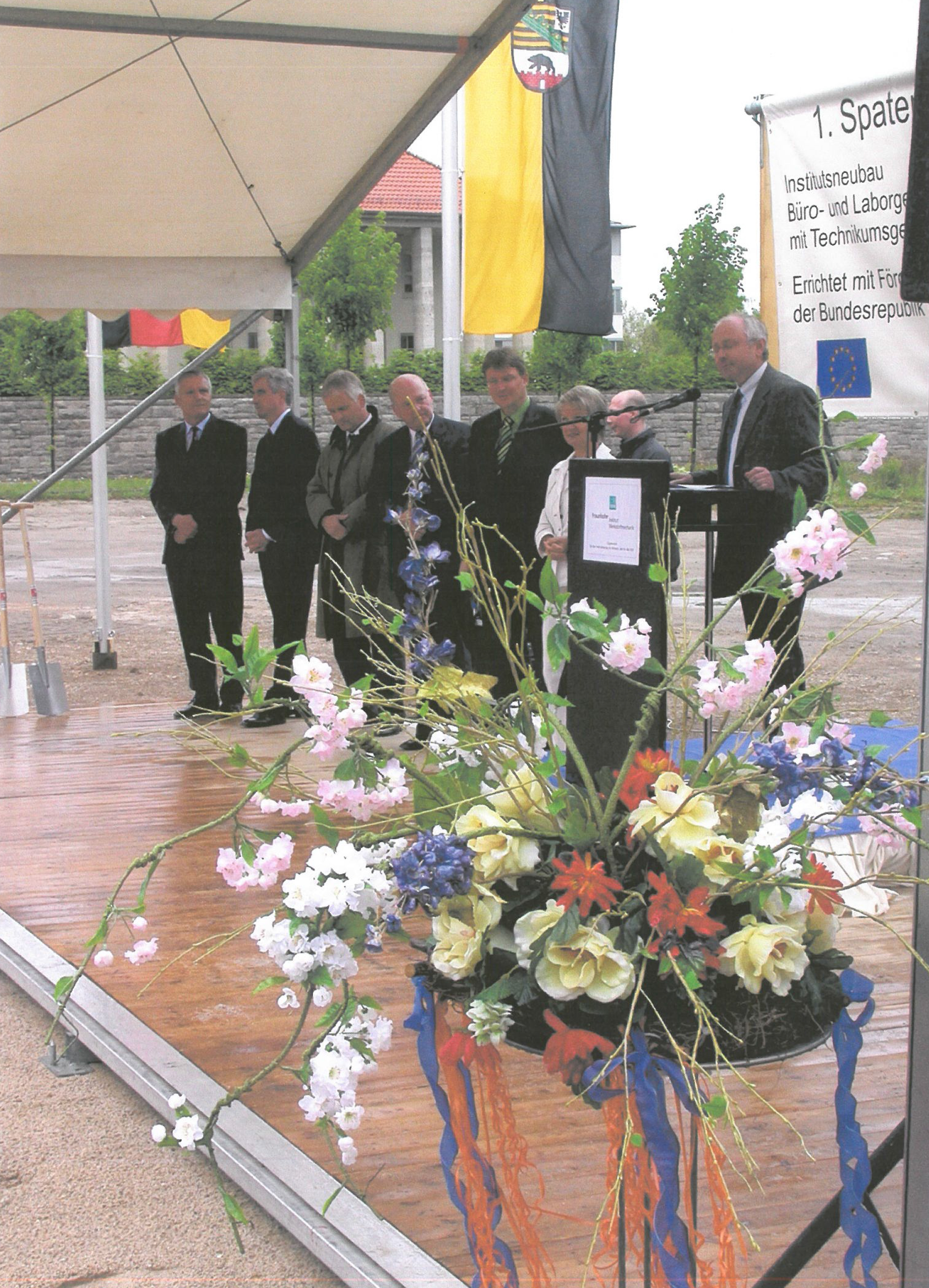As Fraunhofer came to Halle 25 years ago and founded a field office of the Fraunhofer Institute for Material Mechanics IWM Freiburg, Dieter Katzer was one of the co-founders of the research facility for microstructure of materials and systems, as it was called initially. With its large scientific and economic success, the Fraunhofer has firmly established itself on the Weinberg Campus. After all, the field office became an independent institute: the Fraunhofer IMWS. With the 25th anniversary of the success story, Prof. Dieter Katzer talks about how he experienced the radical change and new start at the time.
Mr. Katzer, what are your connections with the Town of Halle (Saale)?
During GDR times, Halle did not have a very good reputation, also because of the coal chemistry industry based here and the associated air pollution. But I can remember very enjoyable student days in Halle. I studied physics here and was very lucky to receive a postdoctoral position at the Academy Institute under Professor Bethge. In such a situation you don’t ask what town it is in. Because the town already had large cultural variety at the time with theatre, music, Burg Giebichenstein art academy, a fully-fledged university with interesting lectures, at the time I found Halle to be a wonderful place to study. By the way, here I noticed very early that there are many similarities between physics and design – design also combines the material mechanics with the technological process of shaping and molding. Today in retrospect I find: Openness to inter and transdisciplinarity were the quintessence of my working life.
The Fraunhofer has been active in Halle for 25 years. How did the idea come about at that time to focus first on microsystems engineering?
During GDR times, there was the Institute of Solid State Physics and Electron Microscopy, headed by Heinz Bethge, in the GDR’s Academy of the Sciences. Following reunification this institute became the Max-Planck Institute for Microstructure Physics and a field office of the Fraunhofer Institute for Material Mechanics, which was based in Freiburg in Breisgau. In addition to its expertise in basic research of structural property relationships, the academy institute also worked on application-orientated topics such as questions of life prediction and reliability assessment of power plant components or failure diagnostics of microelectronic components. As it sometimes happens in life, the right people were in the right place with the right topics at the right time:
The question arose, as to how the expertise in calculating the life and reliability of large power plant components could be brought together with a new focal topic, in order to have a concept that paid its way economically. At that time – at the end of the 1980s, beginning of the 1990s – microsystem engineering was emerging and we asked ourselves in our founding years whether life predictions could be applied to microelectronics and microsystem engineering – a topic that no research facility had examined up to 1991.
And what happened then?
We continuously extended our range of topics – we now wanted to examine the structure - property relationships in all kinds of different materials. This idea posed large challenges for us Mastering a new topical diversity, in order to understand the microprocesses as they take place in materials under use conditions, we now wanted to assess the reliability and life of miniaturized electronic or rather mechanical components and systems.
To do this we needed excellent analytical equipment and preparation techniques in order to penetrate the micro and nano area and to make statements about what was happening on the molecular and atomic level. The Fraunhofer-Gesellschaft gave us the opportunity to become a field office of the Fraunhofer IWM. We put together a competent team and worked up the concepts. We received all possible and selfless help and support from our colleagues in Freiburg. There was great joint excitement about the future!
What difficulties did you have to cope with at the beginning?
None of us had any idea about organizing affordable research. We didn’t know how to fill so-called acquisition trunks, how to get clients interested in us, to work in the right place along the value-adding chain, to identify current trends and to continuously look for new topics with unique selling propositions, in order to be successful on the market. We had to look where new projects were offered for tender and adapt our tasks to them.
At that time our field office had 16 employees and the willingness of all our colleagues to learn and apply something new was simply fantastic.
The institute developed from a field office of the Fraunhofer IWM to an equal location and then into a separate institute. How did that happen?
The growing demand on the market confirmed to use that we were right in our daily work. It was lucky for us that the initial fears, that the market would not pay for this cost-intensive research work, were not confirmed. We enjoyed continuous growth over the years, in particular, we were able to offer our graduates and postgraduates jobs. Since we were founded in 1992, the institute has grown continuously – the growth in personnel was accompanied by additional buildings or rather renting new premises and also for new equipment, because we extended the range of topics to include biological materials and polymers. As space became increasingly cramped, as the head of the part of the institute in Halle I initiated the new building in Walter-Hülse-Straße. The plan was for Fraunhofer to become the gate to the science park on the Weinberg Campus in Halle, but the space had already been assigned. Through good interaction between the State, town and the Fraunhofer-Gesellschaft we were then able to start work on the new building in the Walter-Hülse Straße location in 2005. At the end of 2006, I handed over management to Professor Ralf B. Wehrspohn. At the beginning of 2007, he was able to move into the new building and since then has headed the new institute with his ideas and expertise.
How did you find the personal step from physicist to science manager at the time?
The new task as science manager wasn’t really what I wanted. I really like being a physicist – I wanted to do research and continue by tests in the laboratory. As I became heavily involved in leadership tasks, I often arrived home and thought: »You haven’t achieved anything today.« Until I realized that my new task was now to manage, to procure money, to communicate with firms, to settle personnel matters, etcetera. It became a pleasant task for me, which I took very seriously. I began to read books about scientific communication and management and experienced great positive stress in my new activity. I was motivated right my very roots.
Looking back now, how do you consider this time and what was your most enjoyable moment at the institute?
For me it was a happy time of challenge, but also because we survived them. One of the best moments for me was as the institute the institute gave itself the new name »Fraunhofer Institute for Microstructure of Materials and Systems – IMWS« and since January 2016 has gone its own way as an independent Fraunhofer institute.
We made a name for ourselves in research and developed an expertise that brings other research facilities and many clients from industry to work together with us on projects and to develop new solutions. The initial movers and shakers can be proud of that.
What is your everyday life like now as a retiree? Can you detach yourself from the institute?
I like to call myself a man of independent means rather than a retiree. Retirement sounds too final to me. I still work as an expert assessor for the Federal Ministry of Economics and on the jury for the Central German IQ Prize. With the Heinz Bethge Stiftung we have set up a school student laboratory in the Salt Panners and Saline Museum in Halle. I am very pleased about it and for me it comes naturally to want to do something to encourage young scientists, so I go to the schools and advertise for the STEM subjects. There I often here: »Katzer has worked for so many years and still speaks enthusiastically about his physics.« IT is our duty to introduce young people to the topics from a large part of the economic performance of our country still depends. And of course I also like to visit the institute. The contacts that have been maintained to this day give me inner conformation that not everything I did was wrong.


